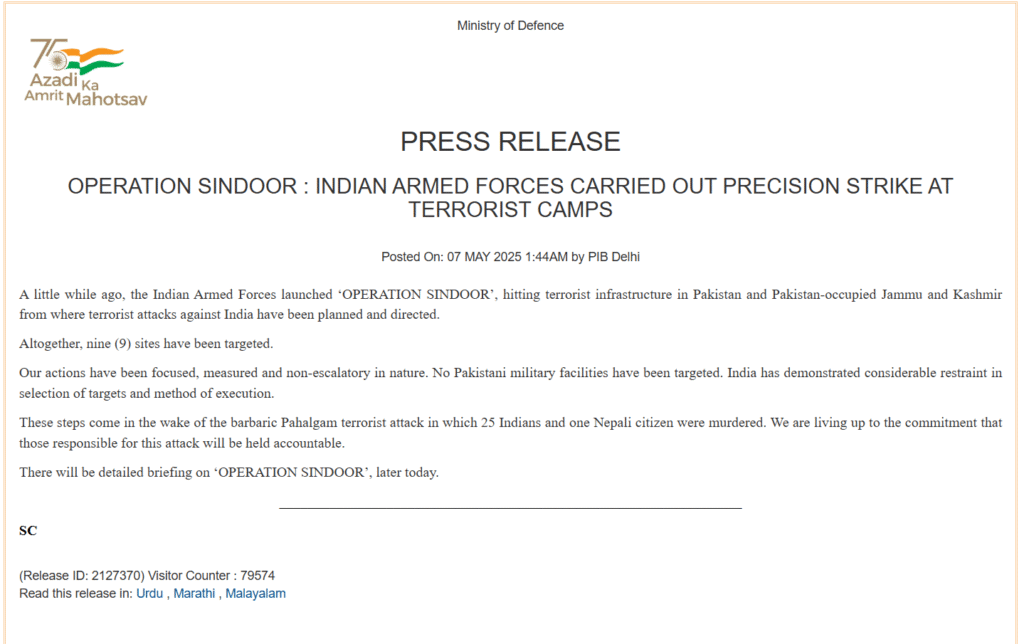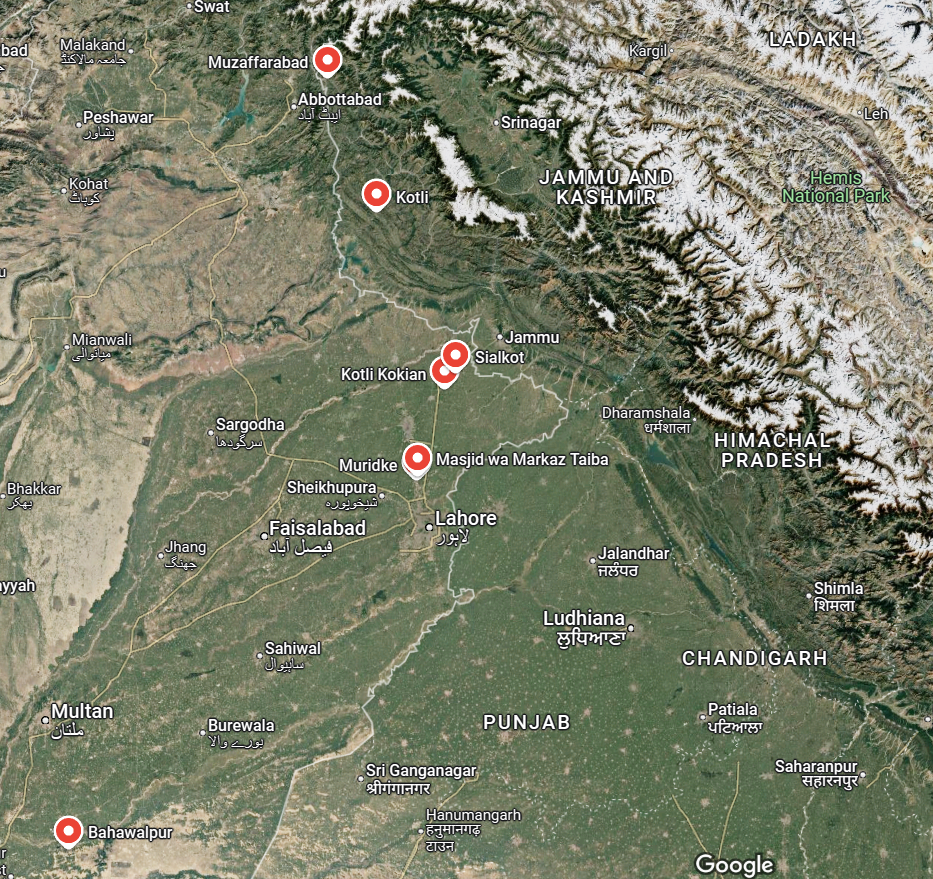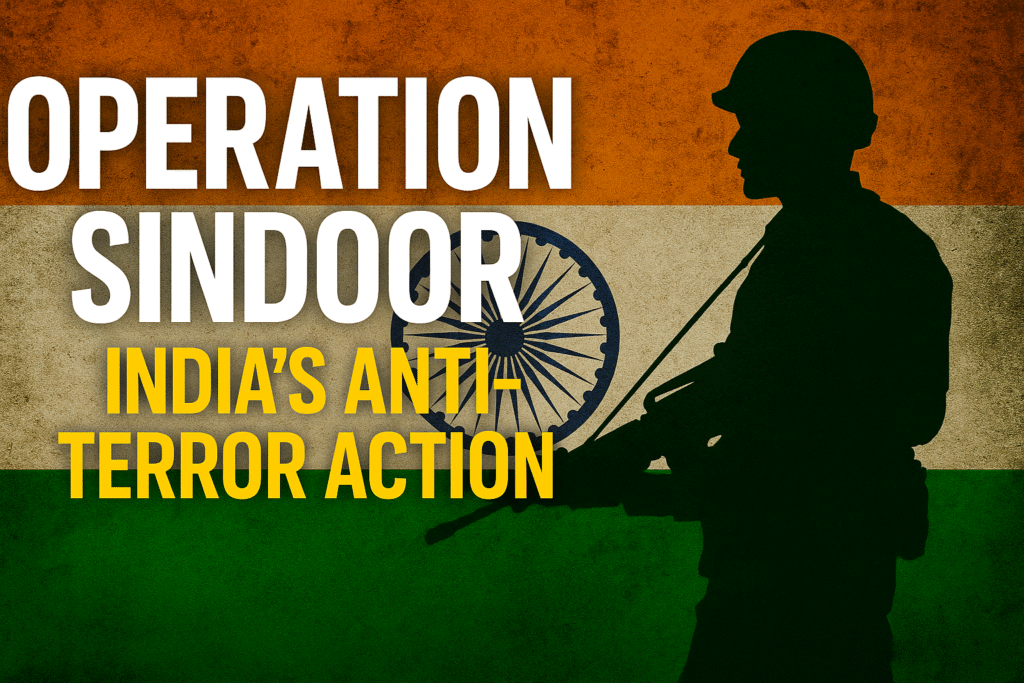The Indian armed forces initiated ‘Operation Sindoor’ targeting terrorist infrastructure. The operation took place in Pakistan and Pakistan-occupied Jammu and Kashmir. This was in response to the Pahalgam terror attack. The attack resulted in the death of 26 tourists. The ministry of defence stated the actions were measured and non-escalatory. No Pakistani military facilities were targeted during the operation.

Aim of the Indian Government was very clear, both in words as well as action: This was totally an act of Anti-Terror action.
Defense Ministor Rajnath Singh Praised the Operation on a post on X.

Targets?
India’s National Security Advisor, Ajit Doval, confirmed credible intelligence tying the Pahalgam attack to Pakistan-based terror outfits. After Islamabad failed to act, New Delhi opted for direct intervention.
- Jaish-e-Mohammed Hub
- Lashkar-e-Taiba Headquarters
- Hizbul Mujahideen Training Camps
Under ‘Operation Sindoor’, the Indian Army targeted nine terror hideouts belonging to banned organisations Jaish-e-Mohammed, Lashkar-e-Taiba and Hizbul Mujahideen in Pakistan and PoK. – TOI

Interesting fact is that: targets were Not only In the LOC, The missiles were launched across borders also!
Coming from India, This is a very big thing.
India’s argument?
New Delhi’s argument was straightforward:
- Credible Leads: Evidence linked the April 22 massacre to Pakistan-based groups.
- Failure to Act: Pakistan denied responsibility and took no action against these outfits.
- Necessity of Strike: India had no choice but to neutralize imminent threats.
Global Reaction:
International responses fell into three main categories: calls for restraint, support for self-defense, and demands for rapid de-escalation.
ome, like U.S. President Donald Trump and Secretary of State Marco Rubio, expressed support for India’s right to self‑defense while urging both sides to avoid further escalation.
United Nations Secretary‑General António Guterres warned that a full‑scale conflict “would be disastrous” and called for maximum restraint from both capitals.
Regional powers—including Japan, China, Israel, and the UAE—echoed similar sentiments, condemning terrorism, praising India’s measured reply, or urging dialogue and de‑escalation to maintain South Asia’s fragile stability.
Pakistan’s Reaction:
Pakistan is being Pakistan:
In swift retaliation, the Pakistan Army unleashed heavy artillery fire across several Jammu & Kashmir border districts and has mobilized additional troops along the Line of Control.

Pakistan has asked China, Turkey, and Gulf countries for diplomatic backing and wants the UN Security Council to condemn India’s strikes. Although both sides are avoiding an all-out war, Behind the scenes, there are concerns that Pakistan may tacitly permit militant groups to carry out small-scale, covert incursions as a form of proxy retaliation.
Major General Ahmed Sharif Chaudhry called India’s strike “cowardly and unjustified” and said civilians were hurt—a claim India denies.
India says the attack was revenge for the Pahalgam terror attack that killed 26 people and targeted nine militant sites linked to JeM, LeT, and Hizbul Mujahideen.
New Delhi furthur says it warned the U.S., U.K., Russia, and Saudi Arabia before acting. With Pakistan firing back strongly, there is a real risk that this could spark a larger conflict in the region.
Will Funding Be a Problem?
Sustaining a higher military posture is expensive. Pakistan plans to boost its defense budget by roughly 18%—to over ₹2.5 trillion—in FY 2025–26, placing significant strain on its public finances.
To fill fiscal gaps, Islamabad depends heavily on IMF loans, including a fresh $1.3 billion staff-level deal, and a roughly $1 billion World Bank climate facility arrangement . China’s role remains pivotal, too, with Pakistan seeking to diversify funding through Panda bonds and AIIB credit enhancements tied to the China–Pakistan Economic Corridor.
Meanwhile, militant groups continue tapping Gulf-based charities and informal hawala networks for covert financing, which official budget cuts cannot easily curb. With foreign exchange reserves hovering around $11 billion–$13 billion, Pakistan’s ability to sustain a prolonged arms buildup without fresh external aid appears limited for Pakistan.
Conclusion
In conclusion, Operation Sindoor underscored India’s determination to eliminate terrorist safe havens while minimizing collateral damage. By carefully selecting nine verified militant camps and providing advance notice to key international partners—including the U.S., U.K., Russia, and Saudi Arabia—New Delhi demonstrated both strategic resolve and a commitment to transparency. The precision strikes sent a clear message that India will not tolerate acts of terror on its soil, even as it seeks to uphold international norms and avoid civilian harm.
While Pakistan’s subsequent artillery response along the Line of Control has heightened regional tensions, India’s measured approach—combining firm military action with open channels for dialogue—helps to contain escalation. By pairing strong defensive measures with diplomatic outreach, New Delhi has reinforced its dual focus on national security and regional stability. Ultimately, Operation Sindoor reflects India’s ability to act decisively against threats without abandoning its broader goal of peace and constructive engagement in South Asia.

